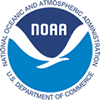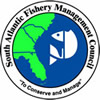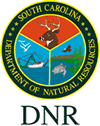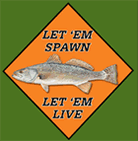Management - Regulation
The Magnuson-Stevens Fisheries Conservation and Management Act authorizes the federal government to regulate marine fisheries in federal waters between 3-200 miles offshore, an area known as the Economic Exclusive Zone (EEZ). The Magnuson Act was first enacted in 1976 as a means of preventing foreign fishing vessels from depleting local fish stocks. It authorized the creation of 8 regional fisheries management councils to manage and conserve marine fishery resources. A reauthorization of the Magnuson Act in 1996 included the Sustainable Fisheries Act which added regulations aimed at preventing overfishing, reducing by-catch, and protecting fish habitat.
 |
The National Marine Fisheries Service is the federal agency responsible for enforcing federal management regulations and protecting our marine resources. It is located within the National Oceanic and Atmospheric Administration in the Department of the Interior. The NMFS supports the regional management councils with multi-disciplinary research at labs across the United States. The Southeast Fisheries Science Center (SEFSC) is headquartered in Miami, FL and runs labs throughout the region from Beaufort, NC to Galveston, TX. |
 |
The South Atlantic Fisheries Management Council (SAFMC) is the regional council with jurisdiction over federal waters off South Carolina. It is headquartered in Charleston South Carolina and is responsible for management of fishery resources in federal waters along the East Coast from Key West to the North Carolina-Virginia border. The SAFMC manages eight fisheries including coastal migratory pelagics, Snapper-Grouper, shrimp, coral and live bottom habitat, dolphin and wahoo, spiny lobster, golden crab, and Sargassum. The council is tasked with creating fishery management plans (FMPs) for each species under management and conducting periodic assessments. |
 |
The Atlantic States Marine Fisheries Commission was formed in 1942 to cooperatively manage near shore marine fishery resources within 3 miles of the coast. The ASMFC has 15 member states from Maine to Florida. The Interstate Fisheries Management Program began in 1981 and currently manages 22 coastal species including spotted seatrout and striped bass. Management of red drum in federal waters was transferred from the SAFMC to the ASMFC in the 1993 Atlantic Coastal Fisheries Cooperative Management Act. |
 |
The South Carolina Department of Natural Resources Division of Marine Resources (SCDNR MRD) is responsible for the management of the states marine and estuarine resources. State agencies work closely with the SAFMC and ASMFC to provide data on abundance and fishing effort that are important to stock assessments. The SCDNR MRD fisheries managers have the power to open and close marine fishing seasons and make recommendations to the state legislature about changes to size and creel limits to ensure that our fisheries are effectively and sustainably managed |



